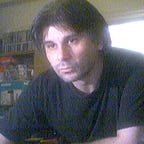Donald Trump’s Twin Brothers-in-Arms
For those of you who might think Donald Trump is a unique phenomenon — although the man beats everybody in terms of number of impersonators — I’ve got news. Trump has twin brothers. Not only in ideology, but in appearance as well.
One is the British brother Boris (Johnson). Boris is the newly emerged victor of the June 23, 2016 Brexit deal. A former London mayor (from 2008 to 2016), Boris represents the right wing of the British Tories, a kind of Tea Party wing of the U.S. Republican Party. He has been a vocal supporter of the U.K. exiting the E.U., which puts him at odds with the (now, former) prime minister, David Cameron.
Cameron, a more moderate conservative, initiated the referendum, but he chose to “remain” in the “Bremain” camp. Currently, there are several other contenders for the party’s new leadership, but Boris has good odds on being one of the Tory leaders succeeding Cameron.
The other one is the Dutch brother Geert (Wilders). Geert is the founder and leader of the Dutch Party for Freedom, and a parliament member of the Dutch House of Representatives.
He was listed as the most threatened politician in the Netherlands.
The reason is his staunch anti-immigration and anti-Islam positions.
For these reasons, Geert was banned to enter the U.K. (in February 2009), but the ban was overturned later on by a British immigration tribunal (in October 2009). The ruling was praised as “a triumph for freedom of speech.”
In 2011, a Dutch tribunal acquitted him of charges of hate speech, considering that his speech was legitimate political debate, but “on the edge.”
In light of the victorious Brexit, Geert is pushing for a “Nexit,” but chances for the Netherlands to have soon a referendum with identical result are lower. Among factors, the Netherlands is in the eurozone, and the percentage of “Nexiters” does not surpass, for now, 20%.
Ideologically, Trump, Johnson and Wilders are related. In terms of the political creed, Trump is considered an “eclectic,” with political views ranging from paleoconservatism to libertarianism (he has listed different party affiliations over the time). Johnson describes himself as a “classic mildly euroskeptic Conservative” who embraced “modern social liberalism” and adopted a more libertarian perspective. Wilders considers himself a “right-wing liberal” and an iconoclast. He lists Margaret Thatcher as a model, not Le Pen, Haider, or the “rightist fascist groups.”
The three countries — the U.S., the U.K., and the Netherlands — also have striking resemblances in their history, economy, and language that might persuade them to follow a common path.
First, all three countries used to have, and still have, a sizeable number of former colonies and territories, mainly in (but not limited to) the Caribbean and the Pacific areas.
Second, all three of them are bastions of capitalism. The New York Stock Exchange (aka The Big Board, acquirer of the first traded securities in 1792), located in Wall Street, Lower Manhattan, New York City, is the world’s largest stock exchange by market capitalization of its listed companies at US$19.00 plus trillion. The London Stock Exchange (part of the Royal Exchange, opened in 1571), with a market capitalization of US$6.00 plus trillion (short scale), is the third-largest stock exchange in the world. And the Amsterdam Stock Exchange (the Bourse, established in 1602) is considered the oldest “modern” securities market in the world.
Third, there is a common language factor, that situates them in the “Anglosphere.” English is the common language in the U.K. and the U.S. The Netherlands, on the other hand, was rated the third European country most proficient in English (with 90% after the U.K. and Ireland, both with 95%).
In the world, the Netherlands rates the second most proficient in English as a second language.
For the still reluctant ones, Trump was born in New Amsterdam, part of the colony of New Netherland, later on turned into the British colony of Province of New York. So how can anybody still be surprised by how much these three brethren share in common?
NOTE — Versions of the article appeared in:
AMERICAN THINKER (El Cerrito/San Francisco, California) [<20 comments]
and
INTELLECTUAL CONSERVATIVE (Phoenix, Arizona) [200+ views]
and
MEDIUM (San Francisco, California) [100+ views; 50+ likes]
and featured in:
SAVE AMERICA FOUNDATION (Clearwater, Florida)
and
WOPULAR
and referenced in:
WIKINOW
NUMBER OF PUBLICATIONS = 6
*****
